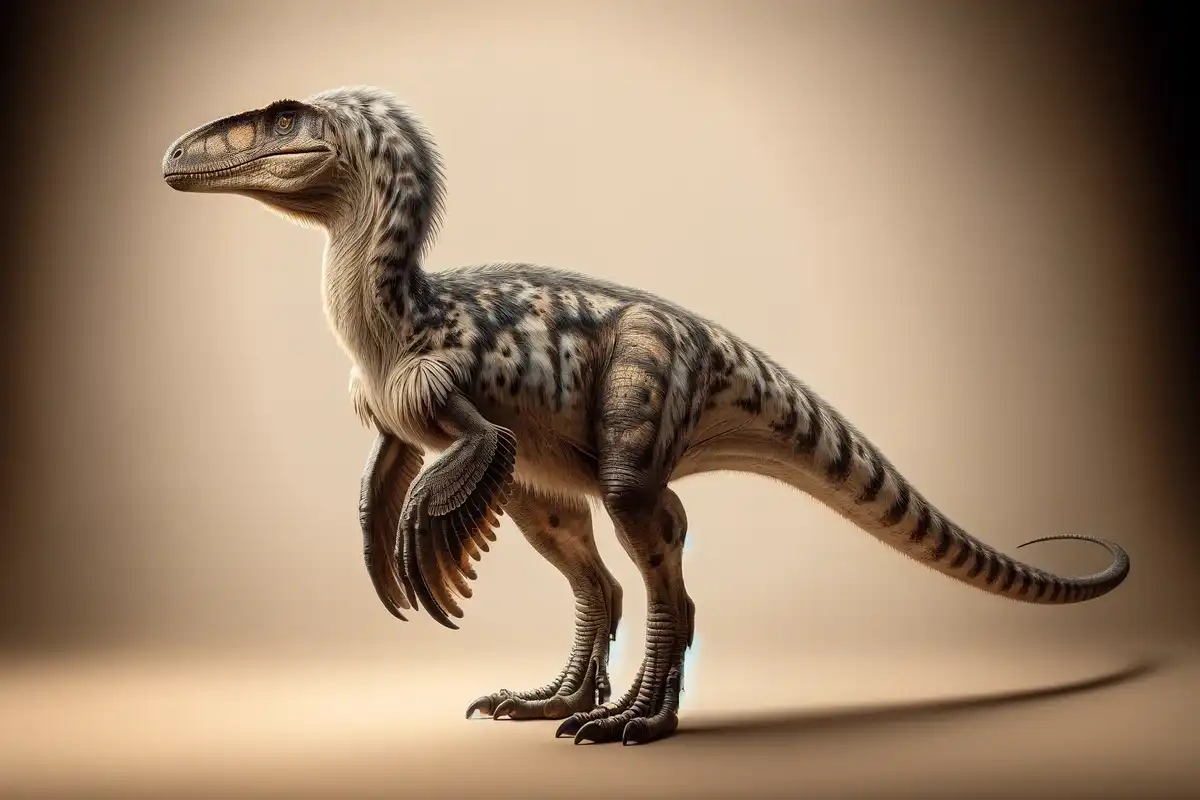About Sakshi Raturi
Sakshi has experience in marketing strategy, social media planning, and recruiting industry experts for capstone projects, she has displayed a commitment to enhancing their skills and knowledge. She has won multiple awards, including a Certificate of Appreciation for Creative Writing and a Certificate of Merit for Immaculate Turut, and is always seeking new opportunities to grow and develop.
Family interest
In house speciality
Education
Qualifications
- Postgraduate Diploma in Management
Recent Work
Megaraptor Magic: Cool Facts for Kids!
The Megaraptor, whose name aptly means 'giant thief', stood out as a formidable megaraptoran theropod dinosaur of both significant stature and remarkable predatory features; most notably, its distinctive, sickle-shaped claws and powerful limbs.
These awe-inspiring creatures once traversed the diverse and vibrant lands of South America throughout the Upper Cretaceous Period (90-85 million years ago), leaving an indelible mark on the fabric of vertebrate paleontology.
Their existence showcases not only the diversity of life that thrived during the Late Cretaceous Period but also the intricate dynamics of prehistoric ecosystems. Within the annals of natural history, detailed studies of juvenile specimens, alongside more substantial findings from adult versions of this large theropod, unveil a profound evolutionary story.
These paleontological treasures illustrate how the Megaraptor's unique anatomical characteristics, such as their razor-sharp, sickle-shaped claws, robust hind legs, and potentially even feather-like integuments. These features enabled them to assume the role of apex predators within their ecological niche.
Far from mere relics of the past, these discoveries provide a richer understanding of the Megaraptor, painting a vibrant picture of a bird-like dinosaur whose reign over its territorial domain was as impressive as it was formidable, characterized by exceptional predatory skills that cemented its position at the top of the food chain.
Fun Spring Hare Facts For Kids
The spring hare, formally recognized as Pedetes capensis and commonly referred to as the South African springhare, is an extraordinary mammal endemic to the semi-arid and arid landscapes of southwestern Africa. This unique species is highly adapted for life in such challenging environments, lacking abundant water and covered in thick, sandy soil perfect for their digging habits.
The spring hare's most notable feature is a pair of long, powerful hind legs that it uses to execute remarkable leaps, resembling a miniature kangaroo's mode of travel, which is why it garnered the common name 'spring hare'. Unlike other hopping creatures, their ability to bound great distances is not merely a mode of transportation but a survival technique.
These long hind legs, coupled with a proportionally elongated tail for balance, enable the animal to cover significant ground quickly, evading predators and swiftly moving between foraging sites. The animal exhibits a reddish-brown coat that aids in camouflaging it within the dry grasses and sandy terrain of its natural habitat. In these vast savannahs and open grasslands, the animal has become an iconic symbol of adaptation and agile movement.
90 Nicknames For Valentina
People use nicknames for friends, family, or acquaintances to show appreciation for a person they adore and love. These nicknames can be based on a person's actual name.
Many catchy nicknames rhyme with a person's given name. You can also choose nicknames with meanings that are more relevant to the personality of the person you want to give a pet name to. However, it can be quite difficult to find or think of nicknames for certain names, like Valentina.
Valentina is mostly considered a feminine name of Latin origin. The meaning of Valentina is ‘strong’ or ‘healthy’.
It is commonly used as a name for girls in several European countries. Despite its popularity, there are few nickname variations. This article presents you with a collection of some suitable pet names for Valentina you can use.
Many nicknames are explained with their meanings, which can help you find one that fits your needs. Reading the article might also help you figure out ways of creating original nicknames by yourself.
Best Nicknames for Valentina
1. Big-Val - is a fitting nickname if Valentina enjoys bodybuilding.
2. Len - the nickname is suitable as an abbreviation of Valentina.
3. Nina (Spanish and Hebrew origin) - means ‘little girl’.
4. Teena - a variation of Tina.
5. Teeny - means 'small one'.
6. Ti - another short and catchy nickname.
7. Tina (English and Greek origin) - means ‘steadfastness’.
8. V - a short nickname for Valentina.
9. Val - is a cool gender-neutral nickname.
10. Vali
11. Vana - means ‘golden’.
12. Val-berry - if Valentine is a fan of the American actress Halle Berry.
13. Valentino (Spanish origin) - means ‘strength’ or ‘health'.
14. Valla
15. Val-bell - a sweet pet name for a child.
16. Val-burger - a fitting pet name if Valentina enjoys eating burgers a lot.
17. Valerie (Latin origin) - means ‘strong’, ‘brave’, or ‘fierce’.
18. Valo
19. Valucci
20. Vami
21. Vicky - is a common gender-neutral nickname.
22. Vivi - another catchy nickname.
23. Vomo
35 Viking Nicknames
Maybe because Norway consistently ranks as the healthiest country on the planet, or the modern is awesome, Viking names are a hot commodity.
Whatever the cause of the sudden rise in popularity globally, many names with Norse origins continue to be popular choices for children throughout Scandinavia.
Throughout the years, the majority have experienced varying degrees of popularity swings, both in and out of vogue. The naming tradition can be traced back to the period before this one. But it was during the Viking Age in particular that the names of the Norse gods and creatures from mythology began to acquire ground.
Vikings frequently characterized their fellow soldiers and raids, so they often gave them nicknames, and famous examples include 'The Stingy with Food' and 'Hálfdan the Generous'.
We have compiled a list of 35 Viking nicknames, which is by no means exhaustive, of things that will not cause your darling young Viking to have an issue with their ax. Let's get going!
40 Tapu Lele Nicknames
People often tend to call their favorite friends or characters by cute names.
These names may not make perfect sense, but they are a way to show your affection for someone.
Tapu Lele is a dual-type Pokémon who got introduced in the seventh generation. It is also referred to as a fairy/psychic legendary pokémon that is not known to form from any other pokémon. It is Akala island's guardian deity.
25+ Tank Nicknames
World of Tanks is a multiplayer online game created by Wargaming, a Belarusian company.
This game features 20th-century combat vehicles. The game is built on a freemium business model, meaning participants can play the game for free, but they have to pay a fee to avail of the premium features.
The World of Tanks has five types of vehicles: self-propelled artillery, tank destroyers, heavy, medium, and light. Over 600 armored vehicles from Czechoslovakia, China, Britain, the United States, the Soviet Union, Sweden, Poland, Japan, Germany, Italy, and France are in the game. Each tank has a different impulse value that makes them unique.
Fans, players, and members of the community have nicknamed most of these tanks and vehicles depending on their size, features, power, abilities, and shape. While some of these names are funny, some have been deduced from the original name itself.
The main aim is to assign simple nicknames to these tanks that are easy to remember or pronounce and give an idea about the tank.






